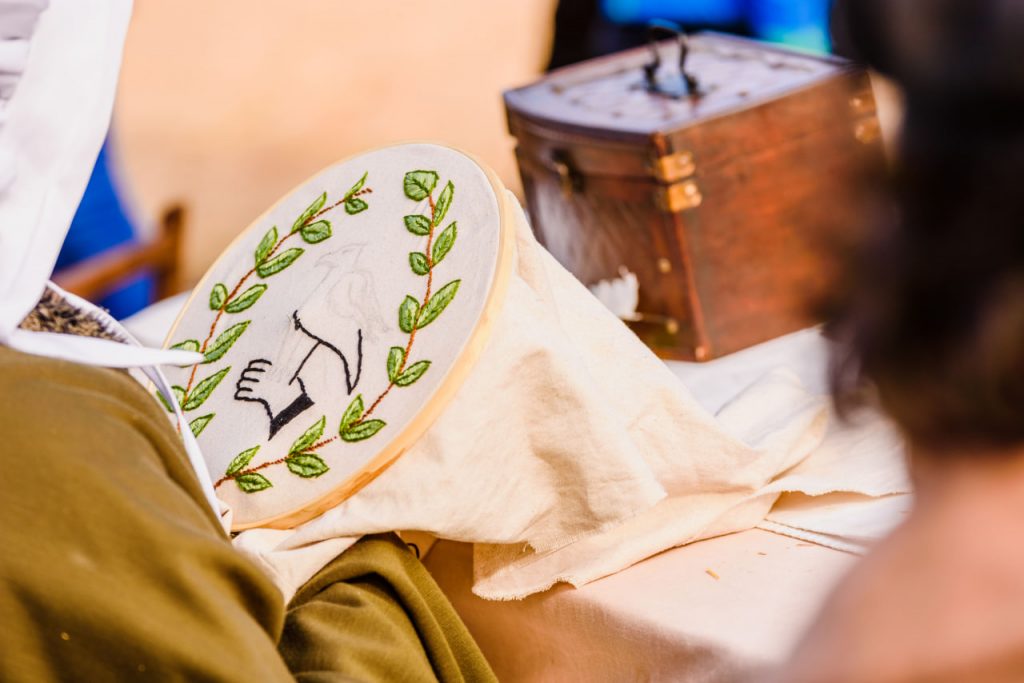In a world of fast machines and instant results, the act of hand-stitching stands apart. It is slow, deliberate, and deeply human. Each thread passed through fabric is a quiet decision, a gesture of presence. For pilgrims, hand-stitching becomes more than craft — it becomes ritual.
Throughout history, travelers have carried stitched items not just for function, but for protection, memory, and intention. Embroidered cloths wrapped food and sacred objects. Hand-sewn journals cradled prayers. Even simple repairs became sacred acts — needle and thread binding not just material, but meaning.
When we hand-stitch today, we participate in that same lineage. Every time the needle dips and returns, we are invited to pause. To think of where we are going, and why. To hold someone in our thoughts. To give shape to something invisible — gratitude, longing, hope — through tangible form.
At Pilgrimage Crafts, we teach not just techniques, but ways of seeing. Stitching isn’t just embellishment — it’s language. A certain color may speak of a place you’ve left behind. A repetitive motif might echo a prayer or chant. Even crooked lines have their own beauty — imperfect marks made by real hands on a real journey.
And perhaps most powerfully, the time it takes to complete a hand-stitched piece becomes part of the piece itself. The hours, the stillness, the attention — they are stitched in, invisible but present. That time becomes a gift, both to yourself and to whoever holds the finished work.
In an age where we move fast, making things slowly — with care, with soul — is a radical act. It reminds us that the journey is not just about reaching the destination, but about honoring each step along the way.
So pick up the thread. Stitch your stories. Let your hands speak.

